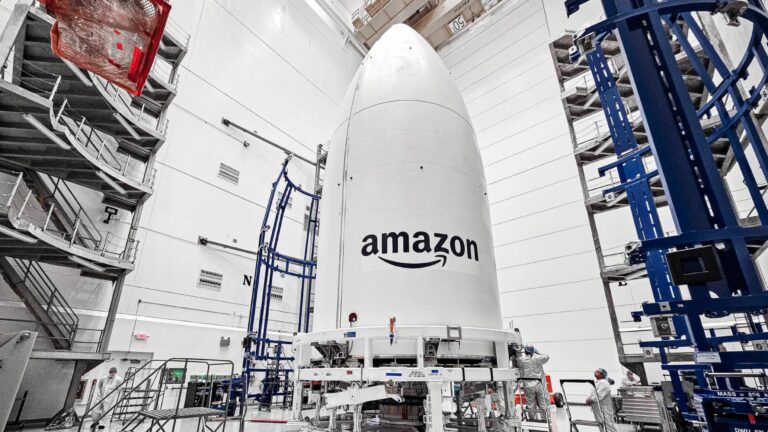Amazon has rebranded its satellite broadband plan from Project Kuiper to Amazon Leo. And no, Leo doesn’t stand for “Late Entrants Only,” even though the project is years behind Starlink and still not ready for anyone to use.
After years of delay, Project Kuiper finally launched its first production satellites into orbit at the beginning of 2025. This came after a trial in 2023, which was followed by more delays before construction of the constellation began.
The name “Project Kuiper” was inspired by the Kuiper Belt, a ring of asteroids in the outer solar system. Great as a codename, but less so as a consumer-facing brand, hence the switch. “Leo” stands for “Low Earth Orbit,” although we’re sure that the ever-creative Register readership will be able to come up with an alternative definition.
While the e-commerce and cloud giant boasted about running “one of the largest satellite production lines on the planet,” and “some of the most advanced customer terminals ever built, including the first commercial phased array antenna to support gigabit speeds,” Amazon Leo still has a long way to go before it will be able to rival SpaceX’s Starlink. At the time of writing, there are only 153 Kuiper spacecraft, a rather long way behind the thousands of Starlink satellites SpaceX has launched, but apparently enough for Amazon to take the “project” branding off.
That said, the company expects to be able to “service select enterprise customers” by the end of 2025 before rolling out more widely in 2026. Amazon has obtained approval from the Federal Communications Commission for 3,236 satellites, but must have at least half launched and operating by July 30, 2026, under its current license.
The project has nothing to do with another Bezos venture, Blue Origin, which successfully launched NASA’s ESCAPADE mission to Mars last night. Blue Origin is, however, one of the providers booked to launch Amazon Leo satellites, alongside Arianespace, ULA, and rival SpaceX.®

